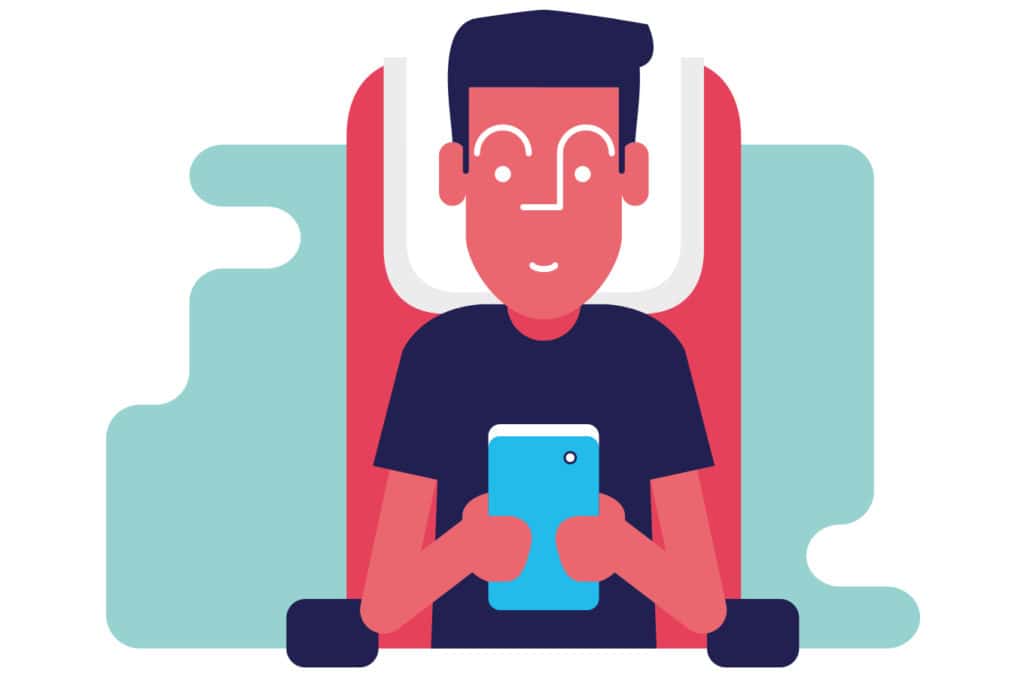Airplane Mode: Clearing the Air and Debunking the Myths
Share

APEX Insight: Anyone who has flown recently has heard a flight attendant make the following announcement during the safety briefing: “Please ensure that your personal electronic devices are on airplane mode.” But what happens to our smartphones when we select the little jetliner icon, and what happens if we don’t? APEX asks three technically inclined experts to clear the air and debunk the myths about airplane mode.
With in-flight connectivity becoming a reality, “airplane mode” has become a source of confusion for passengers. Why do airlines still require airplane mode for takeoffs and landings? What happens to our smartphones when we select the little jetliner icon, and what happens if we don’t?
Myth #1: Airplane mode’s primary function is to protect the aircraft’s operating systems.
In the US, the Federal Communications Commission forbids in-flight cell phone use to protect ground-based cellular systems. “[On the ground,] a single cell phone can only ‘hit’ cell sites in its immediate vicinity… But an airborne cell phone can hit far more cell sites simultaneously. It was originally believed that this would cause ground system problems,” explains Erik Miller, principal of IFE & Connectivity Systems Engineering at American Airlines.
“[On the ground,] a single cell phone can only ‘hit’ cell sites in its immediate vicinity… But an airborne cell phone can hit far more cell sites simultaneously.” €” Erik Miller, American Airlines
And what if a passenger forgets to shift their phone into airplane mode? “My understanding is that the risk of impacting the airplane ops systems is very low, but the phone will continue to try to connect with the cellular ground network,” says Mary Rogozinski, vice-president, Airlines at SmartSky Networks. “At lower altitudes this may be possible, and, if successful, the device will likely connect with multiple cell towers due to the speed of the aircraft and will, in my words, wreak havoc on the cell service provider’s tracking and billing. And batteries will run down.”
Myth #2: All phones are created equal.
Miller says that the FCC’s prohibition of in-flight cell phone use applies to early generation cell phone technology. So, is it possible that we’ll soon have to listen to the passenger in the middle seat yammering away on their phone? Miller doesn’t think so, saying that research shows that “the vast majority of people do not want voice cell phone use allowed on planes. So given the regulatory aspects and the public’s aversion to allowing it, no one has felt compelled to push the issue – in the US.”
Myth #3: Enabling Wi-Fi and Bluetooth in flight could scramble signals.
Although airplane mode disables all of a smartphone’s transmitting functions, both Wi-Fi and Bluetooth connectivity can be selectively re-enabled, giving passengers the ability to access a plane’s wireless in-flight entertainment system. “Airplane mode simply means that the cellular telephony functions on your phone are turned off, and it functions only as a local device or one whose connections are limited to Wi-Fi and Bluetooth,” explains Michael Childers, chair of the APEX Technology Committee. According to Rogozinski, “The [US] Federal Aviation Administration has determined that Wi-Fi and Bluetooth signals do not interfere with the operations of the airplane and cannot connect with any networks off the aircraft.”
“The [US] Federal Aviation Administration has determined that Wi-Fi and Bluetooth signals do not interfere with the operations of the airplane and cannot connect with any networks off the aircraft.” €” Mary Rogozinski, SmartSky Networks
Recent regulatory changes and technological developments may eliminate the need for airplane mode. Earlier this year in Europe, Panasonic Avionics and AeroMobile launched the world’s first in-flight 3G service, by installing a satellite-connected 3G limited power network inside an aircraft. Air Berlin will be the launch customer, and passengers will pay international roaming charges for ground-bound connectivity.


